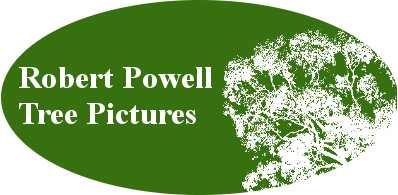

On this website are some pictures of moonah (Melaleuca lanceolata), river red gum (Eucalyptus camaldulensis) and yellow box (E. melliodora), displayed here to give an idea of the beauty of mature naturally occurring specimens that are mature to old.
Although moonah occurs widely through southern Australia, all the pictures of it on this site were taken in coastal Victoria south of Melbourne. There are two sections: my pictures, under the tab ‘Species’, all taken in November/December 2019; and pictures from historical archives, under the tab ‘Historical’.
The pictures of river red gum and yellow box were taken at various times, nearly all of them in eastern Australia. Yellow box is limited to the east (where it occurs widely). River red gum, however, has an exceptionally wide distribution, occurring through much of the Australian continent, and I have included two pictures of it taken south of Geraldton, in Western Australia.
The pictures: how taken, processed
Apart from the historical pictures and one of the Western Australian pictures of river red gum — taken by my wife, Jane Emberson —, all the pictures were taken by me. Some were of quite distant trees, to which I could not gain close access but which I was able to photograph using my camera’s zoom (up to 30x).
There are various ways of photographing trees, and what works best is a matter of taste. I always try to avoid tilting the camera up, so that the trees will not appear distorted. In most of my photos, therefore, there is quite a lot of foreground, much of which I crop out. Thoughtful attention to cropping other parts of the picture too can often improve it. Pictures may contain distracting elements such as road signs or powerlines, which can sometimes be edited out discreetly; a few of the photos here have been thus edited.
Trees can look dark against the sky if the sun is not out, and lack life and detail. If the sun is high in the sky, shadows from upper parts of the tree will often fall on parts of the trunk or branches. I therefore take nearly all my pictures of whole trees in the early morning or late afternoon, when the sun is low, illuminating the trunk and branches well. I particularly like the light just after sunrise or just before sunset, with its warm, pinkish glow. If there are no long shadows from buildings or other trees to get in the way, tree photos at those times of day can be very pleasing.
Photos of just the lower parts of trees I prefer to take with no sun, or else into the light, since patchy sunlight will often spoil their lines or textures.
Some of the pictures have been converted (by a good photographic laboratory) from colour to black and white. Colour can of course delight the eye; and different colours can separate out the parts of a picture, making it more intelligible — for example, by helping a tree to stand out against a background of other vegetation. But black and white can focus attention on a tree’s important features: its shape or structure, the textures of its foliage or bark, or its abundance of detail. Some pictures, especially if simple or containing strong contrasts, can therefore be more striking in black and white.
Historical pictures
I have included some old photographs, because they often show vegetation in a less disturbed state than appears today. Under Australian law, photographs taken before 1955 are out of copyright. I have given the source of each photograph for anyone who wants to investigate further.
My other trees website: south-western Australia
This, the larger of my two trees websites, can be found at https://www.robertpowelltrees.org/. It contains my pictures of more than 25 tree species, mostly ones that occur naturally in Perth — as well as more than 70 historical pictures of trees and vegetation in different parts of south-western Australia.
Comments welcomed
If you would like to comment on any aspect of my websites, you can send me an e-mail at this address: robert@robertpowelltrees.org.
Robert Powell
updated 19/3/21
© Text: Robert Powell
© Photographs: Robert Powell (except where indicated otherwise)
